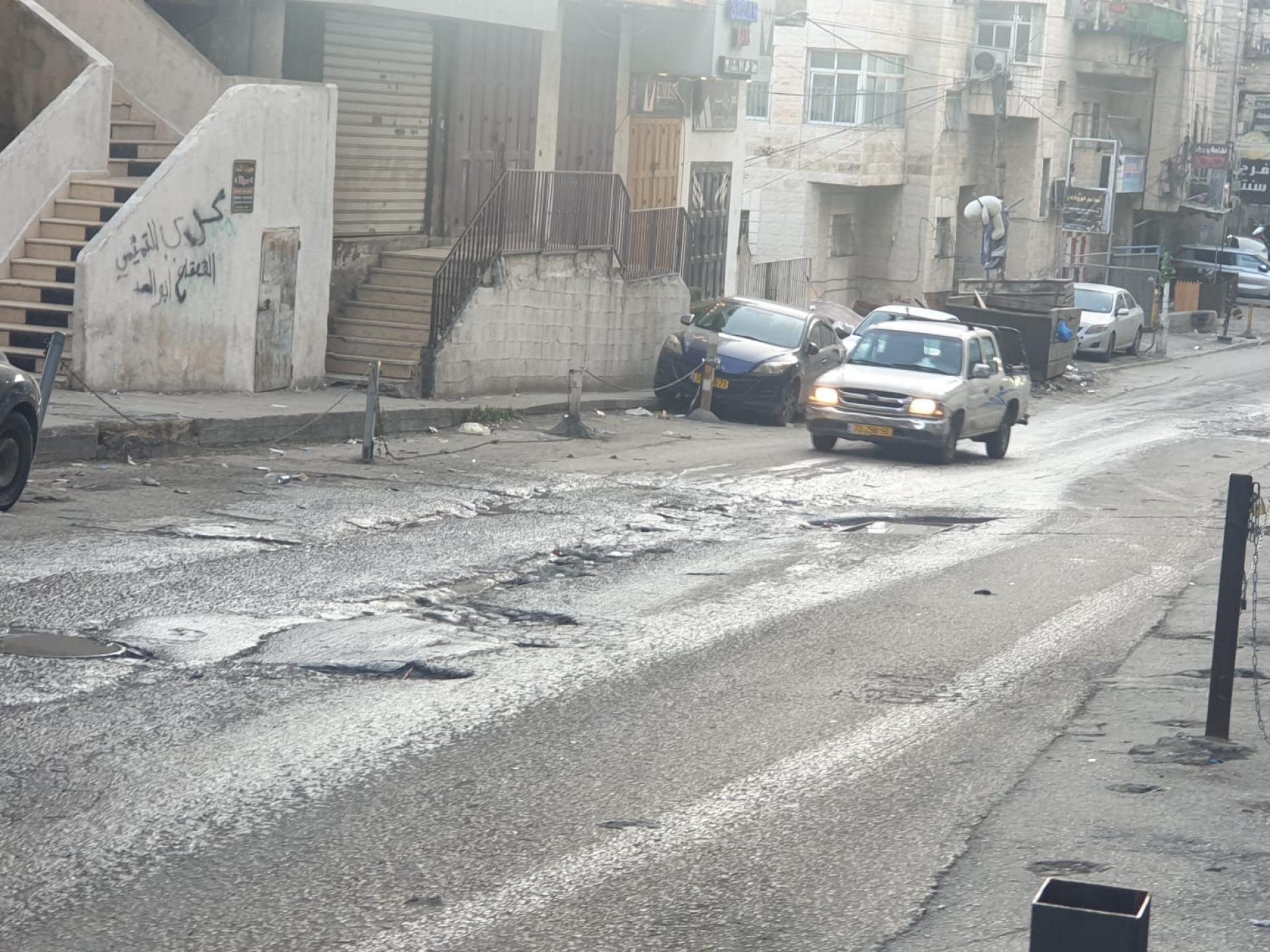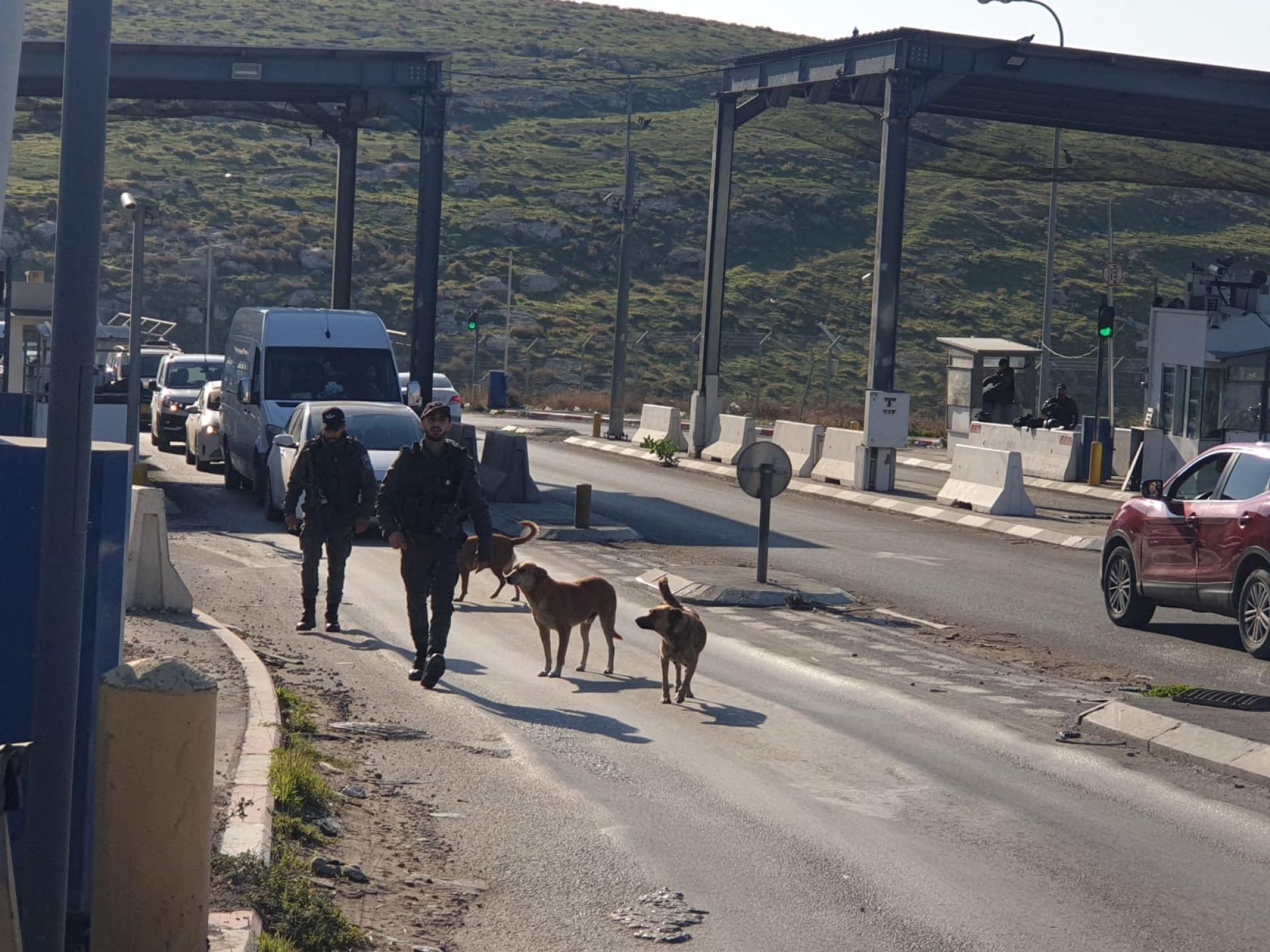Wadi Nar – have the instructions changed?
Shuafat refugee camp, Olive (Ras Abu Sbitan) checkpoint, Wadi Nar checkpoint
One of the goals of this morning's shift was to check if there is any change or any effect on the conduct of checkpoints in Jerusalem due to the change of responsibilities after the elections, on the bodies that operate jointly - the border police and the police at the crossings (Ben Gvir), the Civil Administration (Smotrich), the IDF (Total responsibility for territory and security). We found the answer at the last checkpoint we visited - the Wadi Nar checkpoint (the container).
(Smotrich), the IDF (Total responsibility for territory and security). We found the answer at the last checkpoint we visited - the Wadi Nar checkpoint (the container).
7:00 Shuafat refugee camp
There is a long traffic jam on the way out of the camp to Jerusalem. Every day, also today. The path leading the pedestrians to and from the checkpoint is very long. Why does the parking outside the checkpoint have to be so far, when a large area is unused on the western side of the checkpoint? Years have passed, and there is no other use for the empty space.
Beyond the Separation Wall, the built-up area of the refugee camp of Shuafat is within the urban border of Jerusalem, and only later is there a merger with the houses of the large village of Anata, Area B under Israeli security control. Those who live beyond the unmarked connection point are only entitled to a Palestinian identity card. The main road within the municipal area is very narrow and bumpy. Precisely in the area under the administrative responsibility of the Palestinian Authority the situation is improved.
On the way out of Anata, we notice the structure of a picturesque maqam on a hill above the Anata intersection, and Kamal takes us there. There are caves next to it and a green trail is marked on the rock. We are not sure if this is Israeli or Palestinian. The Maqam is not in use. People come to get some peace here sometimes.
Bulldozers are working on the road leading from the intersection to the settlement of Anaot. Kamal explains that there are traffic jams in the afternoon when the settlers return from Jerusalem to the north West Bank. At that time there is also Palestinian traffic from the Dead Sea area to the north West Bank villages. We would not be surprised if what is being done now is for the sake of separation. And that the movement of Palestinians will finally stop preventing the settlers from returning home quickly.
From there - to the olive checkpoint (Ras al Sabitan)
Eight in the morning, mainly students, patients, merchants, and others going out for various purposes - the workers go earlier. About 3,000 every morning. Depends on the condition of the checkpoint in Bethlehem. When there is a traffic jam is stuck - you drive more than half an hour to pass here. Two checkers move the people quickly.
We are waiting for Kamal on the Palestinian side (Area B) to drive south to the Wadi Nar checkpoint. I get the impression that there is a high and dense construction boom in al Eizariya. The plan is to move all Palestinian traffic to the south of the West Bank through the town and leave block E1 "clean" of Palestinians. It is not clear how the narrow Azaria roads will withstand the load - but maybe it is not interesting, because it is already a problem for the Palestinian Authority (if it survives).
9:00 Wadi Nar checkpoint (the Container)*
The Wadi Nar checkpoint is manned by the border police , Ben Gvir's private army in the territories.
We arrived from al Ezariya to the checkpoint and stood by the open iron gate far from the inspection area. The traffic was slow. We photographed the checkpoint and the line of cars from a distance. Two Border Policemen immediately approached us in a panic and asked us to go back past the open gate. In the meantime, the inspectors stopped Palestinian traffic at the checkpoint.
At their request, we stepped back a few steps past the open gate, and in the process explained to the young soldiers that a checkpoint is an area that civilians pass through, unless a closed military area order is declared there, and that humanitarian organizations are allowed to watch and take pictures there.
After a few more minutes, a soldier and a soldier from the Special Forces arrived determined to evacuate us. They again stopped the passage of Palestinian traffic. This time they informed us that as Israelis, we are not allowed to stay in the entire area at all, and if we do not evacuate, they will evict us themselves. We asked if these were new instructions, but they claimed that they did not receive any, but this is the situation.
Is this a lack of knowledge on the part of the young soldiers, or has something changed in the instructions in the last few days, and is the IDF's permission for humanitarian organizations to observe checkpoints without interfering with traffic or soldiers and even take pictures of them still valid, as it has been for all the years of our activities. We have to find what is happening..
We have been visiting the Wadi Nar checkpoint for more than 15 years. The checkpoint is for vehicles only and is located on the winding and steep road that connects Palestinian traffic between the North and South Banks. The checkpoint is Area C, like any IDF checkpoint, and the area around it is also under Israeli security control.


